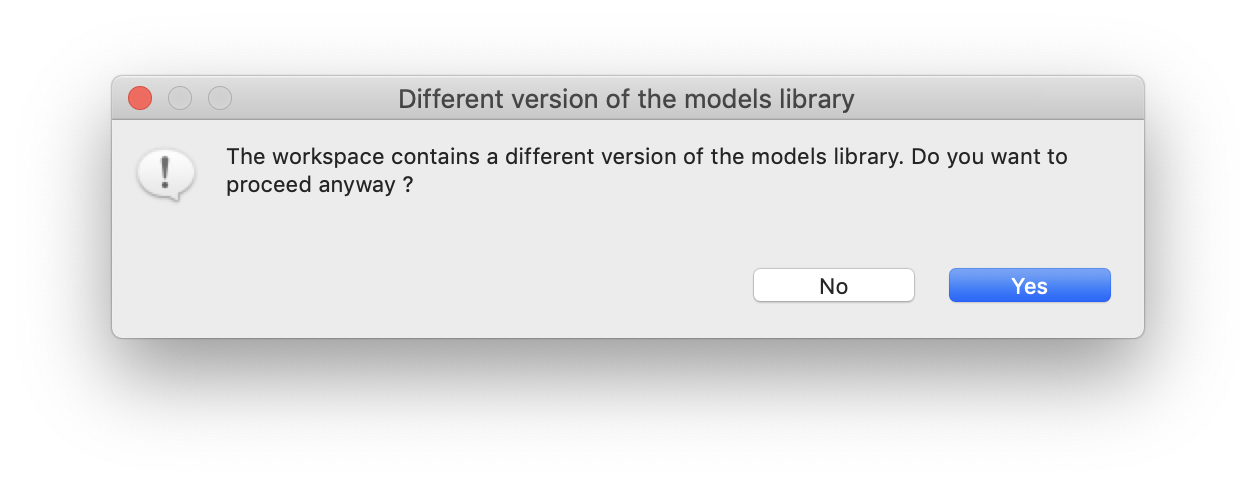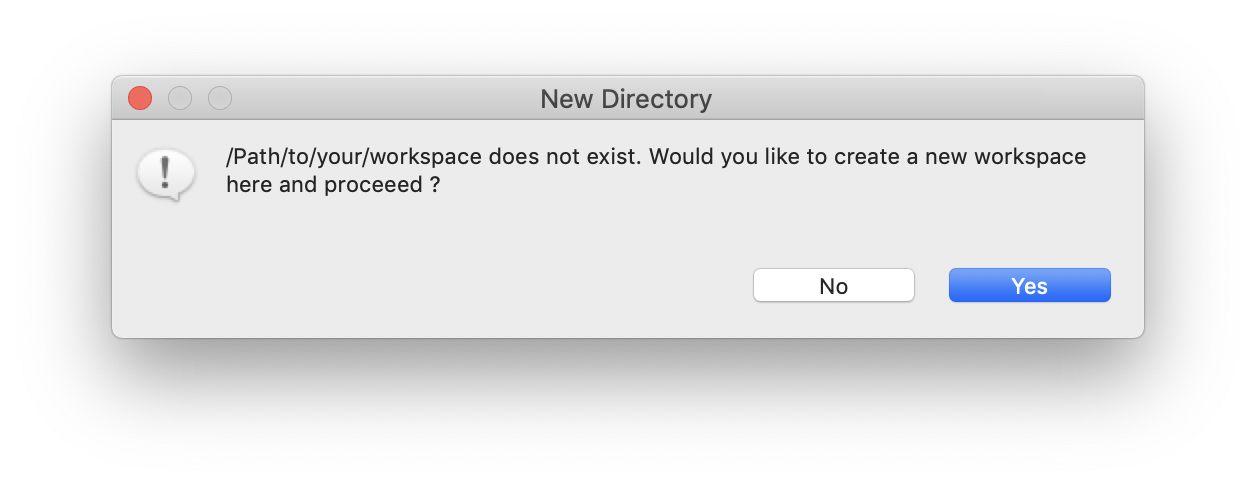-
Notifications
You must be signed in to change notification settings - Fork 5
Launching
Running GAMA for the first time requires that you launch the application (Gama.app on MacOS X, Gama.exe on Windows, Gama on Linux, located in the folder called GAMA_VERSION.NUMBER_YOUR_OS_NAME once you have unzipped the downloaded archive). In case you are unable to launch the application, or if error messages appear, please refer to the installation or troubleshooting instructions.
The extraction of the downloaded archive provides:
- on Mac OS X: a single file named
Gama.app - on Windows and Linux: a folder named
GAMA_1.8_YOUR_OS_NAMEcontaining, among many other files and folders, theGama.exefile (for Windows) andGama(for Linux).
Running GAMA requires that you launch the application file (Gama.app on Mac OS X, Gama.exe on Windows, Gama on Linux) by double-clicking on them or from a terminal.
Note that GAMA can also be launched in two different other ways:
- In a so-called headless mode (i.e. without a user interface, from the command line, in order to conduct experiments or to be run remotely). Please refer to the corresponding instructions.
- From the terminal, using a path to a model file and the name or number of an experiment, in order to allow running this experiment directly (note that the two arguments are optional: if the second is omitted, the file is imported in the workspace if not already present and opened in an editor; if both are omitted, GAMA is launched as usual):
-
Gama.app/Contents/MacOS/Gama path_to_a_model_file#experiment_name_or_numberon Mac OS X -
Gama path_to_a_model_file#experiment_name_or_numberon Linux -
Gama.exe path_to_a_model_file#experiment_name_or_numberon Windows
Past the splash screen, GAMA will ask you to choose a workspace in which to store your models and their associated data and settings. The workspace can be any folder in your filesystem on which you have read/write privileges. If you want GAMA to remember your choice next time you run it (it can be handy if you run Gama from the command line), simply check the corresponding option. If this dialog does not show up when launching GAMA, it probably means that you inherit from an older workspace used with a previous GAMA version (and still "remembered"). In that case, a warning will be produced to indicate that the model library is out of date, offering you the possibility to create a new workspace.

You can enter its address or browse your filesystem using the appropriate button. If the folder already exists, it will be reused (after a warning if it is not already a workspace). If not, it will be created. It is always a good idea, when you launch a new version of GAMA for the first time, to create a new workspace. You will then, later, be able to import your existing models into it. Failing to do so might lead to odd errors in the various validation processes.
When you try to choose a workspace used with a previous of GAMA, the following pop-up will appear.

The following pop-up appears when the user wants to create a new workspace in a folder that does not exist. Click on OK to create the folder and set this new folder as the GAMA workspace.

As soon as the workspace is created, GAMA will open and you will be presented with its first window. GAMA is based on Eclipse and reuses most of its visual metaphors for organizing the work of the modeler. The main window is then composed of several parts, which can be views or editors, and are organized in a perspective. GAMA proposes 2 main perspectives: Modeling, dedicated to the creation of models, and Simulation, dedicated to their execution and exploration. Other perspectives are available if you use shared models.
The default perspective in which GAMA opens is Modeling. It is composed of a central area where GAML editors are displayed, which is surrounded by a Navigator view on the left-hand side of the window, an Outline view (linked with the open editor), the Problems view, which indicates errors and warnings present in the models stored in the workspace and an interactive console, which allows the modeler to try some expressions and get an immediate result.

In the absence of previously open models, GAMA will display a Welcome page (actually a web page), from which you can find links to the website, current documentation, tutorials, etc. This page can be kept open (for instance if you want to display the documentation when editing models) but it can also be safely closed (and reopened later from the "Help" menu).

From this point, you are now able to edit a new model, navigate in the model library, or import an existing model.
- Installation and Launching
- Workspace, Projects and Models
- Editing Models
- Running Experiments
- Running Headless
- Preferences
- Troubleshooting
- Introduction
- Manipulate basic Species
- Global Species
- Defining Advanced Species
- Defining GUI Experiment
- Exploring Models
- Optimizing Models
- Multi-Paradigm Modeling
- Manipulate OSM Data
- Cleaning OSM Data
- Diffusion
- Using Database
- Using FIPA ACL
- Using BDI with BEN
- Using Driving Skill
- Manipulate dates
- Manipulate lights
- Using comodel
- Save and restore Simulations
- Using network
- Headless mode
- Using Headless
- Writing Unit Tests
- Ensure model's reproducibility
- Going further with extensions
- Built-in Species
- Built-in Skills
- Built-in Architecture
- Statements
- Data Type
- File Type
- Expressions
- Exhaustive list of GAMA Keywords
- Installing the GIT version
- Developing Extensions
- Introduction to GAMA Java API
- Using GAMA flags
- Creating a release of GAMA
- Documentation generation